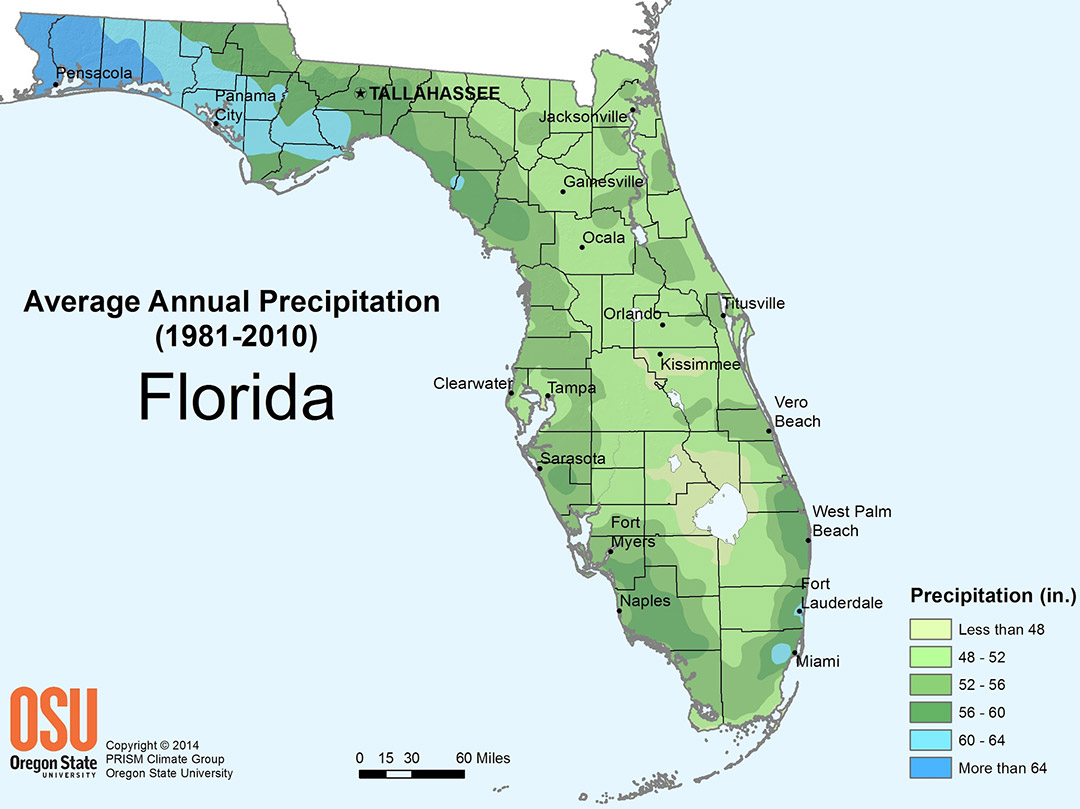Annual Precipitation
Florida averages nearly 54” of rainfall each year, but the amount of rain observed across the state varies depending on location. The wettest parts of the state are the Panhandle and southeastern coast, while the Florida Keys tend to be one of the drier places. Most of the rain that falls in Florida is convective rainfall, meaning it forms from water that has evaporated from the Earth’s surface due to the heat of the sun.
In the northern part of the state there are two rainy seasons, one during the winter with the passage of cold fronts, and one during the summer. The summer rainy season typically starts in the southern part of the state in late April and moves north by June.

Source: PRISM Gridded Climate Data | Oregon State University